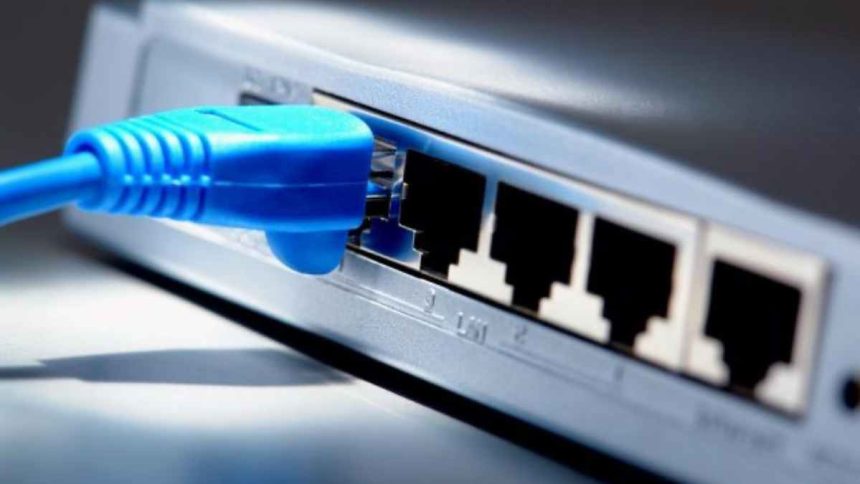A very popular option in homes is to connect to the Internet via cable television. In order to make this option possible, it is necessary that the appropriate network is extended directly into the house where you live. Also, you need to do an exceptionally safe ip address rotation. Then all you need to do is insert the appropriate cable into the connector, and connect it to the modem, which will connect, for example, to your computer or another network device. If you don’t know what to do, your service provider should send a special technician who will set up the connection and make everything work for you. The advantage of such a connection is that it provides stability, high speed, and reliability. Of course, you may find that you do not have this option for your home due to limited coverage. In this case, you will need to look for another connection, such as ADSL/VDSL or some form of wireless connection. Below, we will provide you with an overview of wireless options.
Connecting to the internet using ADSL/VDSL
In terms of the size of the connection, ADSL/VDSL from PrivateProxy is the most common. The main advantage is the speed of this internet connection, which uses the original telephone network. This means that you will need a landline connection in your home, which will be connected to a modem. Nowadays, you will probably want to use all your devices such as your mobile phone, tablet, laptop, etc. via Wi-Fi and not connect anything complicated with a cable from the modem. In this case, you’ll need a modem with a built-in Wi-Fi router. By having a connection to the phone network, you are receiving an analog signal that needs to be converted to digital, and a modem will help you do that. In order to use all your devices at once, you’ll need Wi-Fi, which in turn is provided by the router.
Internet connection via fiber optic cable
The fastest and most reliable connection today is a fiber-optic cable. Unfortunately, coverage is not as widespread because it takes a long time to get permission to lay fiber-optic cables in a particular location and is very expensive. But if this option is available where you live, don’t hesitate. The way these connection works is that the data in the cables is transmitted through light guided by optical fiber, and this allows for superfast transmission. This option is also very cost-friendly in addition to its features. Again, we recommend choosing a Wi-Fi router so that you can all use the internet throughout your home.
Wireless internet
If you are not too demanding when it comes to using the internet, and you want to take it for a weekend getaway, mobile internet can be the solution. Nowadays, many mobile operators can offer you a fast connection without a cable. All you’ll need is a Wi-Fi modem, a connection to electricity (socket), and a SIM card to insert into the modem. Mobile operators can offer you several options in connection speed, namely 3G, 4G, 5G, or LTE.
What’s the difference between a modem and a router
To be clear about whether you require a modem, a router, or a combination, it’s important to be clear about your specific connection requirements.
A modem is used to receive internet traffic from a supplier and provide internet to your home. A modem is usually connected via a coaxial cable or telephone cable, depending on the connection available where you live. Unfortunately, the modem alone cannot provide you with a Wi-Fi network, so you require a router.
- With a router or router, you can arrange to use the internet on various devices within your home.
- Many internet providers can offer you a combination of a modem and a router, so you won’t need to have countless devices in your home at once.
TIP: You can typically tell a modem from a router at a glance because it doesn’t have an aerial and is connected by a cable to a plug in the wall.
Find out what connection options you have at your home address
You definitely want what’s best for your home, but unfortunately, internet connectivity options can vary from address to address. For example, your address may not have fiber optic coverage, or you may not have a landline to your house, and so on.
That’s why most providers, for example, offer verification on their website using your address to show you what connection options they can offer you. As well as the type of connection, it can give you different internet speed offers that may be available for your address.
- If you’re not sure what supplier to look for and where to start, try asking your neighbors. They have probably also dealt with the internet and have a connection.
- Thus, they might be able to advise or tell you what supplier and connection they have.
- In addition, you can find out from them if they are happy with the signal stability and speed. Of course, you can also ask what interventions on the installation were needed in the home.
What you should look out for when choosing an internet provider
Think things through and compare the offers of the connection providers. Pay attention to the terms and conditions and the length of the contract. Of course, make sure you know exactly how much you will pay for the service, including any additional charges. In most cases, the service provider will offer you a device (modem, router). This may be a rental, where a monthly fee will be added to your invoice, you can buy it, or they may offer it for free, but you must sign a contract with them for at least 2 years.
Before you sign a contract with an ISP, take time to study the contract in the comfort of your own home. Make sure that everything you have agreed to actually fits.
Also, make sure you arrange for a technician to come to your home and make sure everything is connected to the internet. Even with this service, you’d better check whether you’ll be paying anything.
We hope that you will now be able to choose an internet connection that suits your requirements. If you’ve just moved into a new home and want to make sure you’ve got everything covered, try our clever moving checklist. In it, you’ll find everything you might need to deal with once you’ve moved in.
Lynn Martelli is an editor at Readability. She received her MFA in Creative Writing from Antioch University and has worked as an editor for over 10 years. Lynn has edited a wide variety of books, including fiction, non-fiction, memoirs, and more. In her free time, Lynn enjoys reading, writing, and spending time with her family and friends.















